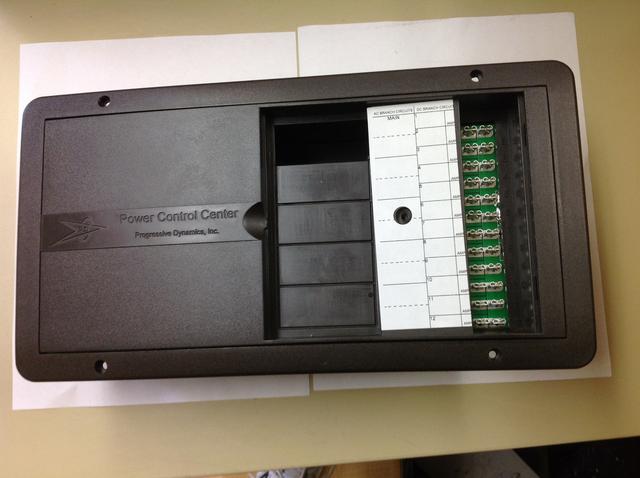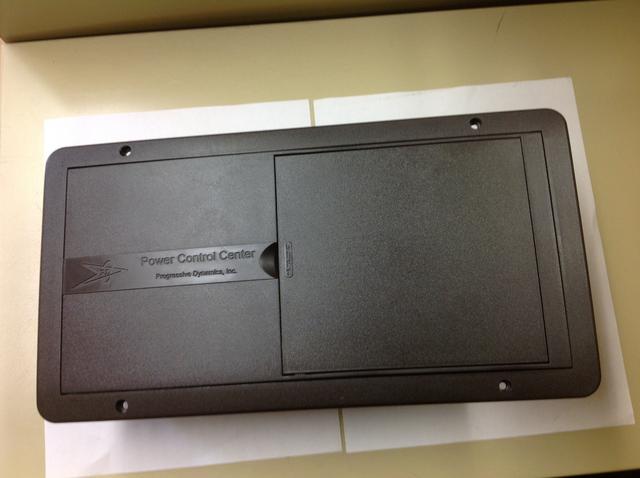Forum Discussion
55 Replies
- ktmrfsExplorer II
BFL13 wrote:
The 2003 Komfort 5er came with their year 2000 manual (dealer supplied) It has wiring diagrams for the trailers they made in Oregon.
They had the 6300 for Canadian and the 6300 for USA set-ups. (ours has a 7300) The USA one had five branches all 20 amp as marked--no idea if built that way with 12 wire for all) and the MW and WH on own breakers.
The Canadian version had four branches, all 15 amp except the AC 20, and the WH and MW shared a breaker. The trailer has a big switch on the kitchen wall for WH,Off,MW, so you have to pick one or the other.
It has a few 120v lights too, which are on the receptacle circuit, which the fridge is on outside, and the converter shares that breaker.
Apparently, they felt it was necessary to have a different one from the USA NEC one, but I am not familiar with the codes for each country. I believe they are very similar though.
looks like you have a "manual" load shed device. Intent is the same, allowing connection of two high current devices on one circuit, while only allowing ONE to be on at a time.
It could be Canadian codes are different than U.S. or that the manual switch is less expensive than a automatic load shed device. - AndonsoExplorer
time2roll wrote:
Andonso wrote:
I found this Progressive Dymanics 30 AMP 120VAC AC/DC DISTRIBUTION PANEL
https://www.ltdrvparts.com/PROGRESSIVE-DYNAMICS-30-AMP-120VAC-AC-DC-DISTRIBUTION-PANEL-PD50B2T2GP.htm
This will serve you well to completely replace the panel. I believe these come with a integrated converter so you will have a spare. Although at $58 I assume it is just a shell. Add your own breakers, fuses and converter.
NEC still limits to five 120v branch circuits but that is up to you. I would sooner add the additional breakers to this panel rather than add a sub-panel or power strip etc. to the old panel.
Yes at that price there's no converter included. I did find 35, 50 and 60 amp dist. panels for considerably more cost, some are VAC only while others are AC/DC, however most do not include a converter.
I'm wondering who is going to actually inspect an upgraded dist. panel to determine if it follows NEC code?
In our state no electrical permit is required for travel trailers.
However I did once perform some work once on my own property that had a 44' 1956 ABC coach. Upgraded the PUD service from 100 to 200 amps and the RVs old bull dog 50 amp panel to a 200 amp panel. completely rewired the RV to 3-wire copper from that older 2 wire alum. with some sort of cloth jacketing.
So I obtain a permit from the county and from the state's labor and industries. I do remember an electrical inspector showing up to check mostly the PUD upgrade as I needed to dig a 100 foot trench 2 feet deep to lay a new higher amp service cable to the RV.
However I don't remember the electrical inspector spending alot of time checking out the rewiring of the rv or it's new 200 service panel. Though he must have looked it over.
Sort of confusing as the state shows online no electrical permit is required for a travel trailers. Perhaps it was the county that required a permit from labor and industries?
When I fixed up the old ABC Coach I was told I needed permits from the county and the state's Labor and Industries, however at the same time I was upgrading the PUD service and installing a service panel in the shed I built partially out of timber I picked up at a Saturday sale.
The RV was only on cement blocks with no permanent foundation. I did follow the Nec code when installing a new service panel and rewiring the RV.
I had new 200 amp service panel RV, new 200 amp service panel on PUD pole and new 200 amp service panel in the shed Andonso wrote:
I found this Progressive Dymanics 30 AMP 120VAC AC/DC DISTRIBUTION PANEL
https://www.ltdrvparts.com/PROGRESSIVE-DYNAMICS-30-AMP-120VAC-AC-DC-DISTRIBUTION-PANEL-PD50B2T2GP.htm
This will serve you well to completely replace the panel. I believe these come with a integrated converter so you will have a spare. Although at $58 I assume it is just a shell. Add your own breakers, fuses and converter.
NEC still limits to five 120v branch circuits but that is up to you. I would sooner add the additional breakers to this panel rather than add a sub-panel or power strip etc. to the old panel.- BFL13Explorer IIThe 2003 Komfort 5er came with their year 2000 manual (dealer supplied) It has wiring diagrams for the trailers they made in Oregon.
They had the 6300 for Canadian and the 6300 for USA set-ups. (ours has a 7300) The USA one had five branches all 20 amp as marked--no idea if built that way with 12 wire for all) and the MW and WH on own breakers.
The Canadian version had four branches, all 15 amp except the AC 20, and the WH and MW shared a breaker. The trailer has a big switch on the kitchen wall for WH,Off,MW, so you have to pick one or the other.
It has a few 120v lights too, which are on the receptacle circuit, which the fridge is on outside, and the converter shares that breaker.
Apparently, they felt it was necessary to have a different one from the USA NEC one, but I am not familiar with the codes for each country. I believe they are very similar though. - ktmrfsExplorer II
road-runner wrote:
My 30 amp rig came from the factory with the microwave and water heater on the same breaker, and the refrigerator is on the same circuit as the power converter and 4 outlets.
dedicated appliances, fridge, microwave, AC HWH etc. are required to have their own seperate breaker.
they may have installed a load shed device, which is OK by NEC when connecting two high current devices to one breaker. Likely when the microwave turns on, the HWH goes off temporarily.
Otherwise trying to run the microwave and HWH element on one even 20A breaker isn't likely to work.
Fridge and converter likely are ok by NEC. My converter and one set of outlets were on the same breaker. While it may be ok by NEC, a converter at full output doesn't leave but a few amps available for the outlets. I moved by converter to it's own breaker to free up a full 15A load to the outlets.
no longer complies with NEC, but still IMHO safe, even safer, and less likely to result is unwanted trips. - AndonsoExplorerI found this Progressive Dymanics 30 AMP 120VAC AC/DC DISTRIBUTION PANEL
https://www.ltdrvparts.com/PROGRESSIVE-DYNAMICS-30-AMP-120VAC-AC-DC-DISTRIBUTION-PANEL-PD50B2T2GP.htm
Provisions for 30 Amp AC main and up to 9 AC branch circuits.
Accepts rated fuses up to 30 Amp –
Space for up to 12 fused DC branch circuits for 12 Volt lighting and DC appliance circuits.
Appears it should provide 4 more fuse spaces for a total of 9 fuses plus a 30 amp main? I unable to see the interior and find any documentation or manual.
My current panel has space for only 6 AC breakers.

- DrewEExplorer II
Andonso wrote:
I found a 20 amp ceramic fuse to test the PD9280.
Connected the black (hot) and white (neutral) to an AC two prong plug, (left the green ground disconnected), and the fuse blew.
...
I'm wondering if I should test again using a three prong AC plug connected to their respective wires, black (hot), white (neutral) and green (ground) from the AC?
No. The fuse blows because something is shorted in the AC side of the converter. There's not a whole lot there: a bridge rectifier, an electrolytic capacitor (or a few), the switching transistor, and perhaps some power factor correction circuitry. I would guess that one of the first three is the culprit.
The ground is a safety ground and doesn't really enter into the operation of the circuit at all. - BFL13Explorer III replied to this in the PD9280 thread. Suggest you delete this from this thread. Gets confusing, I know.
- AndonsoExplorer(deleted)
- AndonsoExplorerYes, I can see the benefits of having an inverter over a noisy generator.
There are gennys that are quieter than others.
I have a noisy Onan 4000 watt that came with my C-Class which I don't use much as the C connected most of the time to shore power.
I've thought about finding lower wattage quiet genny. There are generators that are between 49 and 60 decibels - that are no louder than normal speech. To keep the batteries charged, lighting, coffee and toast, etc. I think perhaps a smaller wattage generator will suffice. Even a thousand watt genny can provide perhaps enough power if you needs aren't great.
However lower decibel generators are going to be much louder than an inverter. So an inverter is a better choice as far as noise is concerned.
Heres a silent diesel generator which could possibly become quieter if encased is some sort of box.
https://www.youtube.com/watch?v=yXvyfQZzJMc
dern technology such as electricity, etc.
About Technical Issues
Having RV issues? Connect with others who have been in your shoes.24,288 PostsLatest Activity: Jan 09, 2022